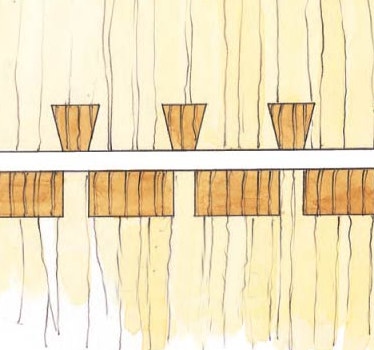Dovetail Joint Pin and Tail Patterns
Even if you love to eat sandwiches, you probably don't eat the same ham sandwich every day...sometimes you like baloney. And so it is with the dovetail joint. One option that many woodworkers don't take advantage of when cutting through dovetail joints is adjusting the layout, or the repeating pattern, of the tails and pins. Sometimes this is because they use a dovetail jig, and its cut spacing is fixed, but sometimes it is just because they don't think of the opportunity to vary, not only the spacing and width of the tails and pins, but the depth as well. High quality dovetail jigs (such as the Leigh D4) allow almost infinite layout options. Of course, if you cut them by hand, you have that flexibility as well. The drawings below show just a few differing dovetail joint layout options. They will get you started when it comes to designing your own custom dovetail layout. Perhaps it could even become your "signature" detail, so that anyone opening a drawer will know that you made it.
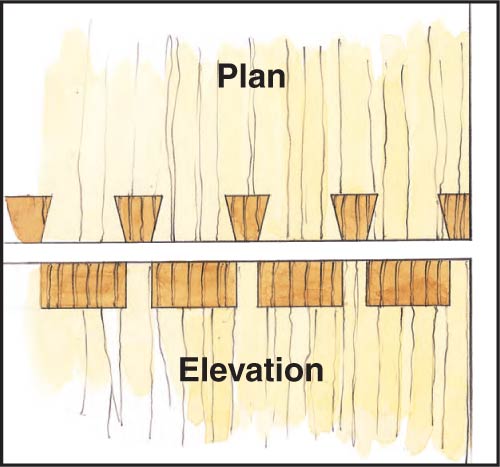
The end grain is always more dominant than side grain because of the structural nature of wood and because it soaks up more finish, becoming darker. This layout creates a boring pattern because the visual weight of each end grain is too similar. The vertical grain of the pins between the end grain of the tails is less refined than that on the layout below because the pins are so large.
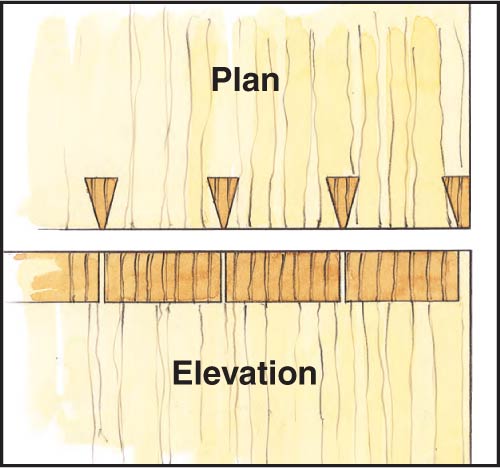
In this layout, we see the tails more powerfully as an entity in plan, and the pins take on a finesse because they are smaller. The band of end grain on the elevation is pierced by fine lines which emphasize the delicacy of the pins. In both instances, the pattern is repetitious end to end. We don't have to follow this formula.
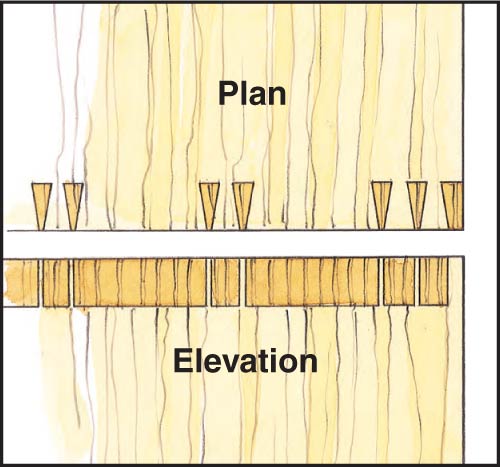
In this layout, the two small outer tails add variety and visual weight at each end. They also create five glue lines very close to the outer edges. This prevents the edges from curling up and, if used on a large structure, resists the stress of lifting usually applied in that area. The tail between the twin pins is the same size as the outer tails, lending a strong sense of continuity when seen in elevation.
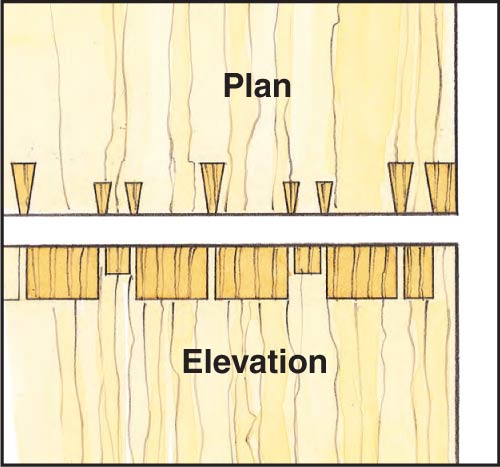
Probably the most dramatic version of the through joint is the hound's tooth dovetail. This layout has small tails and pins sitting between larger ones.
Dovetail Edge Styles
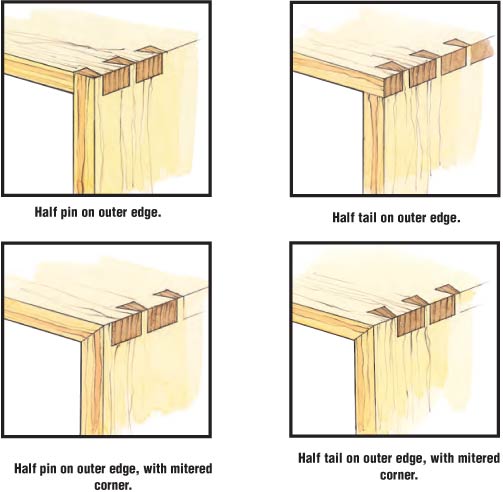
The lines of the outer edges of the joint are affected by four corner options. Starting with a half pin is more attractive, but there is no technical reason to prefer this option over a half tail. A mitered corner unifies the sides and top.
Keep the inspiration coming!
Subscribe to our newsletter for more woodworking tips and tricks
